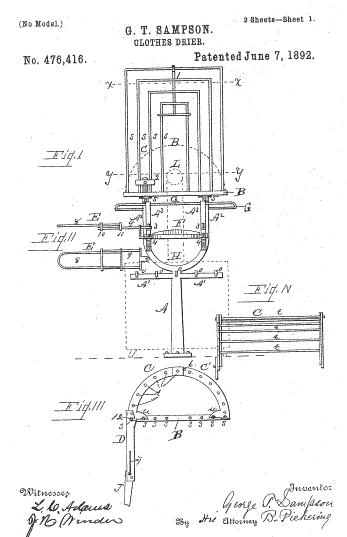People first got dirt out of their clothes by pounding them on rocks and washing the dirt away in streams. Sand was used as an abrasive to free the dirt. Soap was discovered at Rome's Sapo Hill where ashes containing the fat of sacrificial animals was found to have good cleaning powers.

One of the earliest patent for a clothes dryer(U.S. patent #476,416) was received by George T. Sampson on June 7, 1892. Samson also patented a sled propeller (U.S. patent #312,388) on February 17th, 1885.
Electrical clothes dryers appeared around 1915.
American, James King patented the first washing machine to use a drum in 1851.
In 1858, Hamilton Smith patented the rotary washing machine.
In 1874, William Blackstone of Indiana built a birthday present for his wife. It was a machine which removed and washed away dirt from clothes. The first washing machines designed for use in the home.
The first electric-powered washing machine (the Thor) was introduced in 1908, by the Hurley Machine Company of Chicago, Illinois. Alva J. Fisher was the inventor. The machine was a drum type with a galvanized tub and an electric motor, for which a patent was issued on Aug. 9, 1910 (US patent #966677). Here is an example of a 1910 model.
